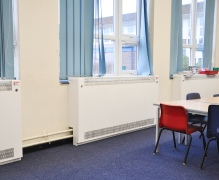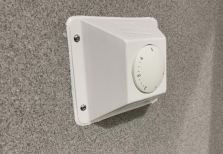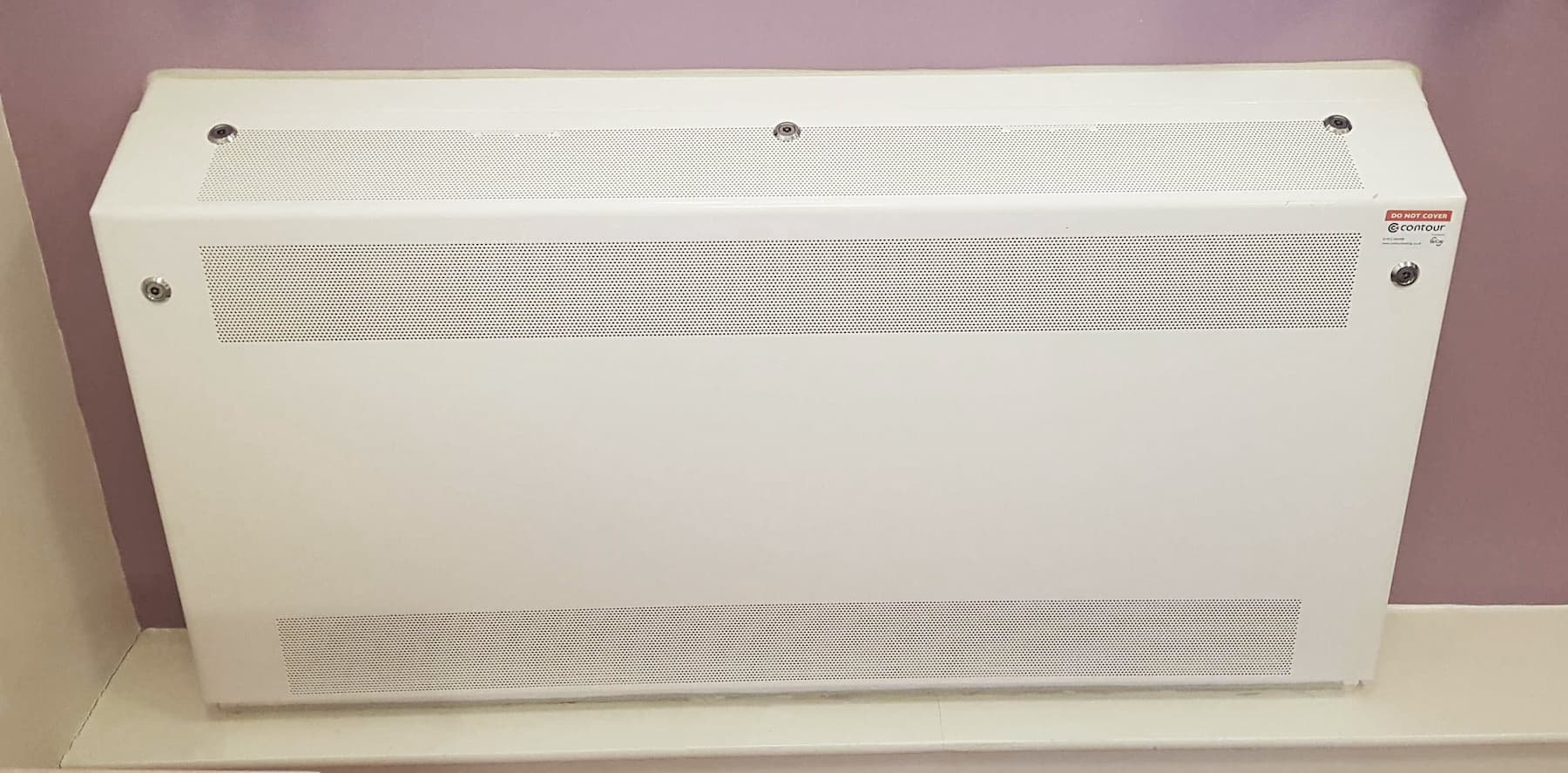When choosing radiators for schools, there are a range of key factors that must be carefully considered:
- Safety
- Sizing & Measurements
- Control & Efficiency
- Design
These elements are critical to ensuring that the radiators provide a comfortable, safe, and effective heating for schools.
Safety
Guidance on minimum temperatures is provided by the Education (School Premises) Regulations 1999, stating “Each room or other space in a school building shall have such a system of heating, if any, as is appropriate to its normal use”.
|
Areas |
Temperature |
|
With lower-than-normal level of physical activity due to sickness or physical disability (e.g., including sick rooms and isolation rooms, but not other sleeping accommodation) |
21°C |
|
Normal level of physical activity associated with teaching, private study or examinations |
18°C |
|
With higher-than-normal level of physical activity (e.g., arising out of physical education) and washrooms, sleeping accommodation and circulation spaces. |
15°C |
Compliance with these regulations not only ensures the achievement of minimum temperatures but also upholds the Duty of Care to staff and pupils.
In special schools, nursery schools, or teaching accommodations with nursery classes, the surface temperature of radiators and exposed pipework must not exceed 43°C to prevent any potential harm to students. It becomes imperative to select Low Surface Temperature (LST) radiators that feature safety measures such as rounded corners, minimising the risk of injuries.
Radiator safety covers serve as an additional layer of safety, providing a protective barrier that prevents accidental contact and reduces the risk of burns or injuries. These covers are designed to maintain a safe surface temperature, even when the radiator is operating at full capacity.
Measuring And Sizing School Radiators
Determining the heat requirements for large heating systems in schools is a critical step in the design process. Each room has different heating needs based on factors such as size, insulation, and usage patterns.
By conducting a heat loss calculation, professionals can accurately assess the amount of heat required to maintain a comfortable temperature in each room. This calculation considers variables such as the room's dimensions, insulation levels, and even external factors like windows and doors.

With the heat requirements determined, the next step is calculating the appropriate radiator sizes for each room. Radiators with insufficient heat output will result in inadequate heating, while oversized radiators can be inefficient and wasteful.
Radiators must be properly sized to ensure optimal performance where thermal comfort and energy efficiency are at a perfect equilibrium.
Valve Selection and Thermostatic Control for Energy Efficiency
Imagine having the ability to tailor room temperatures based on the activity levels in different school rooms. This flexibility is especially important in a school environment where spaces have diverse uses. It is crucial to ensure that target temperatures can be easily adjusted to meet the minimum and maximum temperature requirements outlined in Building Bulletin 101 (BB101).
It is also essential to heat spaces only when necessary to avoid unnecessary energy wastage. For instance, at the end of the school day, classrooms can naturally cool down, while occupied areas such as offices can remain heated.
This is where the selection of the right valves becomes vital. Choosing the suitable valves ensures the efficient operation of school radiators. There are various types of valves suitable for school radiators, including thermostatic radiator valves (TRVs), manual valves, and lockshield valves.
TRVs are particularly useful for regulating the temperature of individual rooms, allowing for precise control of heating output.
Radiator Design And Aesthetics
A visually appealing environment is important for children's growth and development. Customised children's radiator covers can make a learning environment more inspiring and establish a more welcoming atmosphere that significantly impacts the mental wellbeing and happiness of students.

Customised children’s radiator covers with photographs, logos, or artwork reproductions aligning with the theme or style of the environment could also enhance the overall ambiance and help encourage creativity and imagination.
Recommendations For Future Projects
For future projects, be sure to keep these key design considerations in mind when choosing the right radiators for schools. Collaborating with experienced heating professionals ensures precise and accurate radiator sizing, guaranteeing optimal performance and thermal comfort for everyone
Sovereign: The Radiator School Needs
The Sovereign LST range provides a secure heating solution specifically designed for school settings, with features like rounded corners and a Honeycomb pencil-proof grille ensuring extra safety. It offers the flexibility of being fitted with three different types of thermostatic radiator valve (TRV) kits, enabling precise control of heating output and maximised energy efficiency. The option of personalised front panel designs also allows schools to tailor the radiators to their unique aesthetic preferences.
Get in touch today and book a free consultation with one of our heating experts to discuss LST solutions for your classrooms.
-1.png)





















